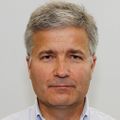Cryo Electron Microscopy: Revolutionizing the world of structural biology and healthcare
Studying the molecular machinery of cells from atomic detail to the cellular context and beyond is a great challenge for cell biology. It is hugely important to zoom into the atom-by-atom arrangement of a biomolecule that gives researchers a grasp of how proteins work. Structural biologists have made great progress in unraveling the structures of individual proteins and protein complexes. Much of the recent results have been obtained using Cryo Electron Microscopy (CryoEM) Single Particle Analysis (SPA), which has turned the generation of 3D reconstructions of protein (complexes) into an accessible and well recognized application. As CryoEM SPA works best on samples of isolated and purified proteins, the expression, isolation and purification is of extreme importance. A purified protein fraction is a key prerequisite for successful data acquisition and 3D reconstruction of a structure in its natural state. Ultimately, the goal is to understand the structure - functional relationship of molecular machineries of all living systems within their natural, functional contexts.
During this talk the concept of CryoEM SPA will be introduced, the most recent developments around the unique CryoEM SPA workflow as well as the applicatory medical breakthrough’s that have been obtained with CryoEM resulting in the 2017 Nobel Prize for Chemistry. Special attention will be paid to dependencies on sample preparation and associated biochemical and vitrification requirements.





